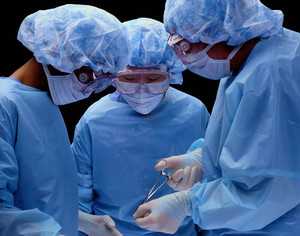Cyclosporine A is an immunosuppressant drug widely used in organ transplantation to prevent rejection. A study of switching between originator and generic drugs showed that the generic was well tolerated and that there were no differences between the originator and generic drugs [1].
Cyclosporine A is a narrow therapeutic index drug. This means that the effective dose and the toxic dose are separated by only a small difference in plasma concentration. For such drugs dosage is often adjusted according to measurements of the actual blood levels achieved in the patient. This raises concerns when switching drugs, as even small changes can mean that the drug is no longer effective or can even lead to toxicity.
Previous studies have observed differences in the pharmacokinetic and pharmacodynamic quality between currently available cyclosporine A formulations. However, a study of originator and generic cyclosporine A in stable adult patients after liver transplantation demonstrated safe interchangeability between originator and generic cyclosporine A.
In order to investigate the effect of switching between originator and generic cyclosporine A in heart transplant patients researchers from the University of Heidelberg, Heidelberg, Germany initiated a retrospective single-centre study. The study included 20 stable adult (> 24 months) post-heart transplant recipients who had been transplanted from 1989 to April 2009 and had been previously switched from the originator product, Sandimmune/Neoral (Novartis), to the generic cyclosporine A, Equoral (Teva Pharmaceutical Industries).
The results showed no statistically significant differences in the cyclosporine A dose-normalized trough levels (DNLs) after switching to generic cyclosporine A (Equoral). The mean dose-normalized trough levels (DNLs) (adapted to the daily cyclosporine A dose in mg) was 0.71 ± 0.26 (ng/mL)/mg on Neoral therapy compared to 0.68 ± 0.23 (ng/mL)/mg on Equoral (p = 0.38). In comparison to the cyclosporine A daily dose prior to switching, at post-conversion, no significant changes of cyclosporine A daily dose were observed (Neoral 140.67 ± 39.81 mg versus Equoral 134.58 ± 41.61 mg; p = 0.13).
The generic cyclosporine A was also generally well-tolerated. No rejection episodes requiring therapy occurred prior to or post-switching (p = 0.99). Additionally, no statistically significant changes of routine laboratory parameters regarding the Modification of Diet in Renal Disease or haematological parameters were seen (all p = not significant). No adverse events after the conversion were observed.
The authors therefore concluded that switching between the originator (Neoral) and the generic cyclosporine A is safe and clinically feasible in this distinct patient population. Adding the caveat, however, that multiple switches between different generic immunosuppressants should be avoided in the interest of patient safety, and close follow-up examinations are warranted.
Conflict of interest
One of the authors of the research paper [1], Andreas O Doesch, received a research grant from Teva Pharmaceutical Industries. The other authors reported no conflicts of interest.
Editor’s comment
GaBI Journal is publishing manuscripts within the educational series on Generic Immunosuppressants in Transplantation, with Professor Teun van Gelder as the Guest Editor.
If you are interested in contributing a research paper in a similar area to GaBI Journal, please send us your submission here.
Related article
Bioequivalence of generic cyclosporine
Reference
1. Kraeuter M, Helmschrott M, Erbel C, et al. Conversion to generic cyclosporine A in stable chronic patients after heart transplantation. Drug Des Devel Ther. 2013;7:1421-6.
Permission granted to reproduce for personal and non-commercial use only. All other reproduction, copy or reprinting of all or part of any ‘Content’ found on this website is strictly prohibited without the prior consent of the publisher. Contact the publisher to obtain permission before redistributing.
Copyright – Unless otherwise stated all contents of this website are © 2014 Pro Pharma Communications International. All Rights Reserved.








 0
0











Post your comment